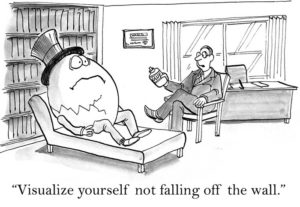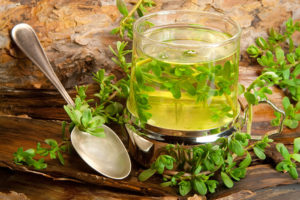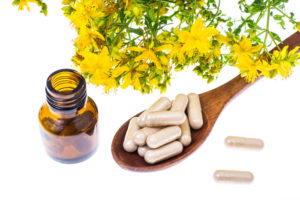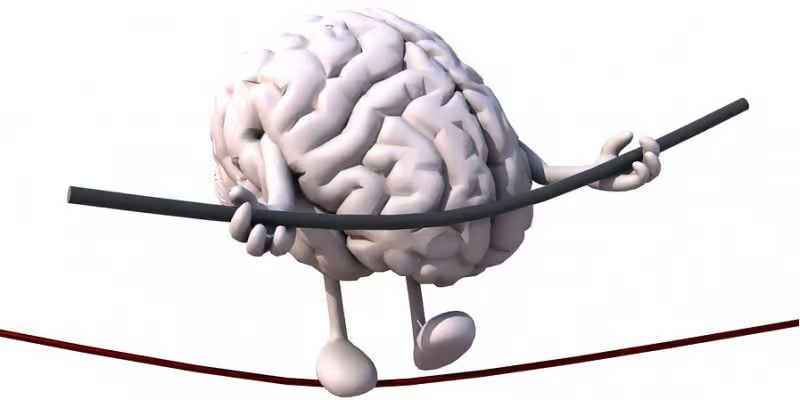Table of Contents
I was diagnosed with post-traumatic stress disorder (PTSD) later in my adult life. And had no idea what caused it. But I suspect it was my experience with a major huuricane I lived through in Antigua where I was living in 1995.
So, my interest in PTSD is very personal. That is one of the reasons I wrote The Best Nootropic Supplements for PTSD. This post may be for you too if you live in a hurricane-prone or typhoon-prone area, you’re familiar with the level of panic and frenzy leading up to the arrival of a major storm.
Especially if you have noticed the residual stress that you feel during recovery, and fatigue after the storm leaves.
The symptoms of post-traumatic stress disorder (PTSD) from monumental natural disasters like hurricanes, typhoons, fires, earthquakes and tornadoes is easy to overlook.
You may not realize that levels of hypersensitivity, feeling on edge, brain fog, depression and feelings of helplessness can be attributed to the disaster you just survived.
A study in 2005 by the Center for Disease Control (CDC) revealed that more than 50% of those surveyed after Hurricane Katrina showed signs of a possible need for mental health treatment.[i]
In New York, a study showed that in areas flooded by Hurricane Sandy, over 11% of people surveyed showed symptoms of post-traumatic stress disorder (PTSD).[ii]
Another comprehensive report revealed that more than 2/3’s of us are likely to be exposed to trauma in our lifetime. And up to 1/5 of Americans could experience a traumatic event in any given year.[iii]
 So recent history shows that you can experience the symptoms of post-traumatic stress disorder (PTSD) from a hurricane and other natural disasters. Just like soldiers returning from combat.
So recent history shows that you can experience the symptoms of post-traumatic stress disorder (PTSD) from a hurricane and other natural disasters. Just like soldiers returning from combat.
Unfortunately, the best mainstream medicine can offer hurricane survivors, and those who’ve gone through other natural disasters like floods, fires and earthquakes, is psychotherapy (talk therapy), antidepressants, benzodiazepines, or dopamine-blocking agents.
In this post we’ll investigate how to recognize the symptoms of post-traumatic stress disorder. Then into recent research on what PTSD does in your brain.
And then we’ll dive into some proven natural dietary and nootropic supplements that have been shown effective in helping people recover from PTSD.
PTSD caused by Hurricanes and Other Natural Disasters
When Hurricane Irma first slammed into Barbuda in the Eastern Caribbean, she was a Category 5 hurricane with winds of 185 mph. After wiping out the islands of Barbuda, St. Maarten, the USVI and BVI, and the Turks & Caicos, the storm tore up the north coast of Cuba. Setting a record for coastal flooding from Baracoa in the east to west of Havana.[iv]
By the time Hurricane Irma reached Naples, FL, the storm weakened to a Category 4 with peak winds of 142 mph. Once the storm petered-out somewhere over Alabama, 16 million people were left without power.
 A month prior to Hurricane Irma, Hurricane Harvey slammed into Texas as a Category 4. Dumping an estimated 27 trillion gallons of rain over the state. And the death toll continues to climb every day.[v]
A month prior to Hurricane Irma, Hurricane Harvey slammed into Texas as a Category 4. Dumping an estimated 27 trillion gallons of rain over the state. And the death toll continues to climb every day.[v]
But long after the floodwaters recede, and the devastation is cleaned up, those who lived through Harvey or Irma face a different kind of recovery. From the storm’s assault to their physical and mental health.
The stress that came from not knowing if your home was under water. Not knowing if your roof was going to fall on your head. Seeing someone killed or bodies floating by. The incredible sound of the storm that reminded you of the racket created by three freight trains going by.
In the immediate aftermath of a crisis like Hurricane Irma or Harvey, the priority is survival.
But after first responders and volunteers leave and the outpouring of support subsides, survivors are left with haunting memories. Stress that can take a toll on mental health.
And for many, can cause the very real symptoms of post-traumatic stress disorder (PTSD).
What is post-traumatic stress disorder (PTSD)?
The full syndrome of post-traumatic stress disorder (PTSD) was first defined in the Diagnostic and Statistical Manual of Mental Disorders (DSM-III), third edition of the American Psychiatric Association (APA) in 1980.[vi]
The APA defined “a traumatic event was conceptualized as a catastrophic stressor that was outside the range of usual human experience”. They had in mind events such as war, torture, rape, the Holocaust, atomic bombings, natural and man-made disasters.
While most people exposed to traumatic events do not develop PTSD, others go on to develop full-blown syndrome.
The stressor ‘criterion’ specifies that a person has been exposed to a catastrophic event. Or repeated exposure to the horrific consequences of a traumatic event by people like police or body handlers.
What are the Symptoms of PTSD?
You can get and experience the symptoms of PTSD for decades or even a lifetime. Symptoms usually begin within 3 months of the traumatic incident. But sometimes can occur much later.
For symptoms to be considered PTSD, they must last more than a month. And be severe enough to interfere in functioning relationships or work.[vii]
Re-experiencing symptoms
- Flashbacks – reliving the event over and over
- Nightmares
- Frightening thoughts
Avoidance symptoms
- Avoiding places, events, or objects that are reminders of the experience
- Avoiding thoughts or feelings related to the traumatic event
- Feeling detached or unable to connect with loved ones
Arousal or reactivity symptoms
- Hypersensitivity, easily startled
- Hypervigilance, feeling tense or on edge
- Difficulty sleeping, insomnia
- Irritability or angry outbursts
Cognition and mood symptoms
- Brain fog, trouble concentrating, loss of memory
- Depression, hopelessness
- Trouble remembering key features of the traumatic event
- Feelings of guilt or blame
- Loss of interest in enjoyable activities
- Headaches
Children with PTSD
- Wetting the bed after learning to use the toilet
- Forgetting how or unable to talk
- Acting out the scary event during playtime
- Being unusually clingy with a parent or other adult
But there is increasing evidence that PTSD isn’t just psychological. Several researchers have found a strong link between PTSD and inflammation or other immune responses.
A study published in the Journal of Psychiatric Research found elevated levels of c-reactive protein in survivors of the World Trade Center attack.[viii]
The association between this biomarker and PTSD is so strong that some have proposed diagnosing PTSD with a CRP blood test.
Post-Traumatic Stress Disorder (PTSD) and Your Brain
PTSD is a stress disorder. Neuroscientists at the University of California, Berkeley, found that chronic stress triggers long-term changes in brain structure and function.[ix]
Chronic stress changes neural networks. Cortisol creates a domino effect that hard-wires pathways between the hippocampus and amygdala. (The amygdala (lizard brain) is the area responsible for your fight-or-flight response).
This hard-wiring caused by stress is not the way your brain was designed. But chronic, ongoing stress tricks your brain into rebuilding circuits and hunkering down for the long haul.
This re-wiring appears to be permanent. Unless you intervene with something like anyone of the nootropic supplements we’ll investigate in a minute.
Chronic stress seems to ‘flip a switch’ in stem cells in the brain. And turns them into a type of cell that prevents connections to the prefrontal cortex. Preventing improved learning and memory.
And laying down the scaffolding linked to anxiety, depression and PTSD.
Chronic stress coats axons extending from neurons in excess myelin, reduces the number of neurons, and gray matter decreases while white matter increases.
Under conditions of chronic stress and excess cortisol, your brain’s axons are coated (or sheathed) in more myelin than normal. Under healthy conditions this “sheathing” is a protective measure.
But this excessive sheathing is likely an evolutionary measure made to reinforce the connection between the hippocampus and amygdala. Improving the fight-or-flight response during extended periods of threat or attack.
The chronic stress caused by hurricanes and other natural disasters which result in PTSD hijacks your fight-or-flight response system.
It backfires in daily life after a traumatic event like a hurricane, in which you are no longer in physical danger.
These are the Best Nootropic Supplements for PTSD
If you recognize any of the symptoms of PTSD months after a hurricane or other disaster – there is hope. You can recover from post-traumatic stress disorder.
 Your doctor will likely prescribe antidepressants, benzodiazepines, or dopamine-blocking agents. And may refer you to a psychiatrist for talk therapy. Or worse yet, something like ‘Prolonged Exposure’ therapy. Where you’re told to keep on reliving the event until you’re desensitized to it.
Your doctor will likely prescribe antidepressants, benzodiazepines, or dopamine-blocking agents. And may refer you to a psychiatrist for talk therapy. Or worse yet, something like ‘Prolonged Exposure’ therapy. Where you’re told to keep on reliving the event until you’re desensitized to it.
That sounds to me like cruel and unusual punishment. But if you’re brave, you may want to try it.
Instead, I recommend trying some natural dietary or nootropic supplements.
The following nootropics have been found in clinical settings, and in real life, to help alleviate the symptoms of PTSD.
Each nootropic below has a live link that will take you to the full review for that dietary supplement. Including recommended dosage and side effects.
Ashwagandha
This ancient Ayurvedic herb, Ashwagandha has been used for thousands of years for its remarkable stress-relieving properties. It helps reduce anxiety and depression because it reduces the stress hormone cortisol, lowers blood sugar levels and improves lipid profiles.[x]
Ashwagandha helps regenerate axons and dendrites of neurons in your brain. It helps reconstruct synapses.[xi] The junctions where neurons communicate with other neurons. Boosting memory and restoring neural networks affected by severe stress like PTSD.
But Ashwagandha does so much more to relieve stress, anxiety and depression. Go to the link above and read the full review for all the remarkable benefits this herb offers.
Just one example is a study done comparing Ashwagandha with the popular benzodiazepine lorazepam (Ativan®). And the tricyclic antidepressant imipramine (Tofranil®).
The researchers concluded that as a mood stabilizer, Ashwagandha worked on depression and anxiety as well as either of the two antidepressants.[xii]
Bacopa Monnieri
 Bacopa Monnieri is a perennial aquatic herb originally from the wetlands of southeast Asia. Otherwise known as ‘water hyssop’, it’s often referred to as “Brahmi”. Named after the supreme god Brahma.
Bacopa Monnieri is a perennial aquatic herb originally from the wetlands of southeast Asia. Otherwise known as ‘water hyssop’, it’s often referred to as “Brahmi”. Named after the supreme god Brahma.
Bacopa’s two active components are bacosides A and B. They improve the signaling of electrical impulses between neurons in your brain. Bacosides also help rebuild damaged neurons. The same neurons damaged by chronic stress caused by PTSD.[xiii]
Bacopa also reduces stress and anxiety. Research at Banaras Hindu University in India showed Bacopa as effective for anxiety as the benzodiazepine drug lorazepam.
One of the side effects of lorazepam is memory loss. Bacopa Monnieri on the other hand, reduces anxiety while boosting cognition.[xiv]
NADH
NADH is the active coenzyme form of Vitamin B3 (niacin) that is found in and critical for the health of every cell in your body and brain.
NADH is the primary carrier of electrons from glucose and lactate for ATP synthesis. ATP is the fuel source for mitochondria. The power supply in each of your brain cells. So you need NADH to transfer the energy from the food you eat into a type of energy your body can use.
Research has shown that supplementing with NADH regenerates stem cells in your brain[xv], decreases anxiety[xvi], and reduces the symptoms of chronic fatigue.[xvii]
Some clinics in the USA and other countries are using NADH therapy as a treatment for addiction, anxiety, depression, chronic stress and post-traumatic stress disorder (PTSD).
Lithium Orotate
Lithium is a soft, silvery-white alkali metal and trace element considered essential for human health. The therapeutic use of lithium goes back to ancient Greek and Roman times. People enjoyed soaking in alkali springs to help with physical and mental illness.
Today lithium has the undeserved reputation as only a ‘drug’ used to treat bipolar disorder and mania. But the clinical research on the neuroprotective benefits of lithium are so overwhelming, some scientists are beginning to ask “why isn’t everyone using lithium”?
Here we’re talking about micro-dosing lithium in the form of Lithium Orotate for treating the symptoms of PTSD.
Lithium has been shown to prevent apoptosis, reduce glutamate toxicity mediated by NMDA-receptors, promotes BDNF needed for synaptic plasticity for learning and memory, and stimulates neuronal stem cells.
Supplementing with Lithium Orotate has been shown to stabilize mood, and prevent depression and even suicide. Lithium Orotate will help put a stop to outbursts of rage, and reduce anxiety.
For those dealing with PTSD in the aftermath of a hurricane, using Lithium Orotate could mean feeling excited about life for the first time in a long time. Anxiety and social anxiety are no longer a problem. Life is simply more fun and enjoyable.
If you’re dealing with insomnia, racing thoughts, or lack of motivation, I highly recommend trying Lithium Orotate and see how it works for you. Motivation could increase. And you’ll have more coping ability.
L-Theanine
 L-Theanine is a non-dietary amino acid found in green tea (camellia sinensis). It is similar to the neurotransmitters l-glutamate and l-glutamine.
L-Theanine is a non-dietary amino acid found in green tea (camellia sinensis). It is similar to the neurotransmitters l-glutamate and l-glutamine.
L-Theanine boosts alpha brain waves (8-12Hz) promoting alert relaxation[xviii]. And theta brain waves associated with creativity and relief from trauma.
L-Theanine increases GABA, serotonin and dopamine levels in your brain.[xix] As well as increasing Brain-Derived Neurotrophic Factor (BDNF) and Nerve Growth Factor (NGF). Producing an energizing and calming effect. And improving cognition and memory.
And L-Theanine is an antagonist of NMDA receptors which can inhibit synaptic release of glutamate. Protecting your brain from over-stimulation caused by glutamate, and possible glutamate toxicity.
You can get L-Theanine in capsule or tablet form using 200 – 400 mg once or twice per day.
My preferred way of getting L-Theanine is drinking 3 or 4 cups of green tea throughout my day. But extracting the optimal amount of L-Theanine from green tea is both an art and science.
Please see the full review for more on this remarkable nootropic including how to steep the perfect cup of green tea.
Phenibut
Phenibut is an analogue of the inhibitory neurotransmitter GABA. It was developed in St. Petersburg, Russia in 1963. And has since been used as a pharmaceutical used to treat PTSD, anxiety, depression, insomnia, alcoholism and other neurological disorders.
The addition of a phenyl ring allows Phenibut to cross the blood-brain barrier much more readily than supplementing with GABA. This nootropic boosts the calming neurotransmitter GABA. And has been shown to decrease Beta brain waves and increase Alpha brain waves.[xx]
Some neurohackers say Phenibut is the best anti-anxiety ‘medication’ they’ve ever used. Including some well know pharmaceuticals (i.e. Clonazepam®, Diazepam®, Alprazolam®) used to treat anxiety. With none of the nasty side effects that come with prescription meds.
I’ve even seen reports by combat veterans who say that Phenibut worked far better than any prescription anti-anxiety med. Truly worth considering for treating the symptoms of PTSD once the hurricane is over.
Rhodiola Rosea
The ancient remedy Rhodiola Rosea has remarkable stress-relieving and anti-anxiety properties. And stands shoulder to shoulder with some of the most potent drugs used to treat depression and anxiety.
Rhodiola Rosea helps in neurogenesis by repairing and growing new neurons. It also activates the synthesis and re-synthesis of ATP, your body and brain cell’s main energy source.
Rhodiola Rosea helps reduce the inflammatory C-reactive protein which some professionals are considering using as a diagnostic tool for PTSD. And salidroside, one of many components of this incredible herb, protects neurons from oxidative stress-induced cell death.
Reports from the nootropics community, and data from clinical trials show that Rhodiola Rosea encourages a balanced mood.[xxi]
And Rhodiola improves mental performance under stress. Studies have shown it increases the number of neurons in the hippocampus to normal levels. The same neurons lost as a result of PTSD.[xxii]
One study published in Phytomedicine evaluated the efficacy of using Rhodiola Rosea compared to the antidepressant sertraline ((Zoloft®).
The research team concluded that even though Rhodiola offered slightly less antidepressant benefits, it possessed “a more favorable risk to benefit ratio for those with mild to moderate depression”.[xxiii]
SAM-e
SAM-e is the naturally-occurring amino acid methionine bound to an ATP molecule. And is found in nearly every cell in your body. It helps produce and breakdown the neurotransmitters acetylcholine, dopamine, serotonin, norepinephrine and melatonin in your brain.
Studies show that SAM-e is very effective in treating depression without the side effects of prescription antidepressants. And while pharmaceutical antidepressants can take from 6 to 8 weeks to begin working, SAM-e can work much faster.
Scientists at the US Department of Health and Human Services conducted an analysis of 102 individual studies in 25 databases on SAM-e and depression in 2002.
In their report, the researchers concluded “Treatment with SAM-e was equivalent to standard therapy for depression”.[xxiv]
For optimal effects with SAM-e, stable, enteric-coated tablets are recommended. And taken on an empty stomach, either one hour before or two hours after meals.
One big word of caution: SAM-e needs Vitamins B6 & B12 and folate to work. Or SAM-e will elevate your homocysteine levels. High homocysteine can cause heart attacks.
St. John’s wort
St. John’s wort is a potent antidepressant. It has been used to treat a variety of internal and external illnesses dating back to the ancient Greeks.
St. John’s wort inhibits the uptake of serotonin, dopamine, GABA, glutamate and norepinephrine. Inhibiting the neuronal uptake of these neurotransmitters can have a profound effect on depression and mood.
 St. John’s wort extract decreases oxidative stress, prevents neurotoxicity, and brain inflammation. It helps maintain mitochondria electric potential in brain cells.
St. John’s wort extract decreases oxidative stress, prevents neurotoxicity, and brain inflammation. It helps maintain mitochondria electric potential in brain cells.
And St. John’s wort moderates the genes controlling the function of your HPA-axis which is directly related to symptoms of anxiety and stress.
In 1977, the British Medical Journal published a meta-analysis of 23 previously published studies on St. John’s wort drawn from foreign medical journals.
The analysis showed that overall, St. John’s wort was significantly superior to placebo. And was as effective as pharmaceutical antidepressants.[xxv]
The same journal published another study in 2005 showing that St. John’s wort was equally effective in treating depression and better tolerated than the widely prescribed antidepressant paroxetine (Paxil®).[xxvi]
St. John’s wort has been extensively studied for treating a wide range of health disorders including PTSD. To see more of these studies, click the live link above to go to the full review of this amazing nootropic supplement.
But dosage of St. John’s wort and choice of supplement can be complicated. So please refer to the full review.
And you should NOT use St. John’s wort if you are taking any kind of antidepressant medication. For a full list of precautions, see the full review.
Post-Traumatic Stress Disorder may be Curable
You took refuge in the shower as the roof was peeled off from over your head. Now you feel homeless in 90-degree heat with no A/C. No water or food for days. And you can’t call anyone because the cell towers are down.
Months after the trauma and when things have finally settled… the symptoms of rage and feelings of hopelessness set in. You can’t talk to family or friends. And nights are filled with nightmares and no sleep.
It doesn’t have to be this way.
PTSD is not a tough nut to crack no matter what the mental health professionals say. Instead of re-living the horror of the trauma you were dealt with using ‘Prolonged Exposure’ therapy. Or dealing with the side effects or outright failure of antidepressants.
Try natural nootropic supplements instead. And put your life back together. You can recover.
The thing is you may not get any help from your doctor. They haven’t the knowledge or experience in anything other than ‘traditional treatment’. You will likely have to do some experimenting on your own.
You can start with a combination of:
- Ashwagandha or Bacopa Monnieri
- Lithium Orotate
- NADH
- SAM-e (with a high quality B-Complex)
- Rhodiola Rosea
Learn to steep and drink 3 or 4 cups of green tea during your day. And see how you feel in the next few days.
If one nootropic doesn’t seem to be providing any benefit then try another from the list in this post. Follow the dosage recommendations for each provided in the full review for each nootropic.
Keep at it until you do feel relief from the PTSD symptoms you’ve been dealing with. And get your life back with these safe, natural treatments for PTSD.









Join The Discussion - 36 comments
Ali
July 26, 2020
Hi David,
I think that I might have PTSD, so I’m going to give the suggestet nootropic stack a go.
Is there an alternative to Sam e, that i can use safely with the other nootropics?
Thanks!
David Tomen
July 26, 2020
Ali, there is no a substitute for SAM-e but it’s not critical to use SAM-e to get the full benefits of the rest of this stack.
Ali
July 27, 2020
Ok, thanks David!
Cameron
October 21, 2019
Hi David,
What do you think of low-dose naltrexone for trauma?
David Tomen
October 21, 2019
Cameron, I do not have any direct experience with low-dose naltrexone and haven’t done the research. But a quick look and there seems to quite a bit of clinical information available supporting its use.
Edwin Young
September 11, 2019
Hi David,
Thanks for your post on PTSD. It is quite helpful. I have a 15 year old son who has developed Alopecia Totalis that I believe is a result of emotional distress caused by divorce. Would you recommend same supplements for a teenager? I have tried supplementing for “Laeky Gut”. “AutoImmune”, Vitamin deficiencies, used Ashwaganda, Rhodiola Rosea. So far I have not had any success. Appreciate your input.
Regards
Ed Y
David Tomen
September 11, 2019
Ed, alopecia totalis seems to be caused by an immune system malfunction which may be caused by extreme stress. So in this case I don’t think we would be treating stress but the immune system problem instead. One study found success with treating long-standing alopecia totalis using combined methotrexate and prednisone: https://www.mdedge.com/dermatology/article/68818/hair-nails/successful-treatment-long-standing-alopecia-totalis-using
I have no problem with teenagers using nootropic supplements as long as you are not using anything that will mess with normal, human brain development. And whatever you do use should be dosed correctly as well. Usually the bottom end of the lowest recommended dose for each.
Instead of looking at this as a potential PTSD problem I suggest the above approach. And then if you’d like to do more reading on treating anxiety with nootropics, spend some time with these posts:
https://nootropicsexpert.com/best-nootropics-for-social-anxiety/
https://nootropicsexpert.com/top-7-nootropic-adaptogens-to-conquer-anxiety-and-stress/
Robert Long
September 10, 2019
I have probably every issue going on. Obsessed thinking, negative, depression. Lots of cervicogenic issues. So idk the true source of my issues. But I feel so tense and upset all the time now.
Meds I can’t take – I get nasty in them.
Even Benzos were great at first and that backfired.
Now I feel like a stroke waiting to happen.
Questions
1. Lithium Orotate I tried – should one feel good after a single dose?
I tried a week + in it and felt kind of off
2. If someone (hypothetically) has veinous Stenosis (assumption) or arterial Issues in the brain – can anything help?
Thing is – some nootropics claim cerebral blood flow – but is that higher pressure or vasodilation?
3. Phenibut – you mentioned in video it can be nasty to use long term? Seems like a version of Benzos ?
David Tomen
September 11, 2019
Robert, it’s going to take more than 2 or 3 nootropic supplements to fix what you are trying to fix. I know this from experience even not knowing the exact cause of your issues.
Every nootropic described in this post is powerful and work as long as you follow dosage recommendations and commit to using them long-term. I suggest trying the stack suggested near the end of this post using the dosage recommendations you’ll find in each separate supplement review.
Phenibut can be a powerful was to treat anxiety but it likely not the best option. It’s only for the very experienced neurohacker who doesn’t have addiction problems.
Vinpocetine and Pine Bark Extract are powerful ways to boost and normalize blood flow in your brain. I suggest reading the reviews of each and choose one to try.
Lithium Orotate is often used “as needed” and not on a regular basis. But it one of the few nootropic that provides a benefit you can feel after the very first dose.
Christina
August 7, 2019
Thank you so much for your valuable work. I am a victim of child hood domestic violence and I diagnosed myself with PTSD after reading psychological literature on trauma. I find that the talking cure does not cure childhood memories of abuse but only prolongs feelings of helplessness and bitterness. The minute I started looking into nootropics, the traumatic memories and preoccupation with the past began to subside. Even when I do feel bitter, the feelings subside and I’m able to redirect my energies to the here and now. Neuroscience truly is the answer to trauma because you can’t fix a physical problem by simply talking about it. It’s like trying to talk your way out of a broken leg. I find your work on nootropics to be so thorough and enjoy your tailor made research and attention to nuance. You are helping create positive change in the world. Thank you.
David Tomen
August 8, 2019
Christina, this is such a great line I’m going to ask you if I can use it: “It’s like trying to talk your way out of a broken leg.”
Barry Tegeler
September 15, 2018
Hi David,
As a combat veteran with 3 tours in Vietnam and years of treatment through the VA I can verify that nootropics have been a turning point in my life and have proved to be much more effective than prescription medications for the relief of PTSD symptoms. An important element in the treatment is that a person takes the responsibility for treatment without telling someone else to “cure me”. In my opinion a trauma experience induces a trance like state in a person. It is in this trance state where the trauma memories are stored. To effectively work with and treat those memories; it is necessary to induce a working trance state. I found that hypnosis proved to be the real turning point in my life. Meditation is another way to invoke a healing state. I would suggest a combination of nootropics, meditation and self-hypnosis for those seeking real relief from PTSD. I would also suggest the continuation of these processes as a lifestyle long after the symptoms have dissipated. So that rather than trying to remedy a problem a person is creating a solution to possible future events.
David Tomen
September 15, 2018
Barry, thank you for your input and I completely, absolutely agree with every word of your comment.
Andrew
March 21, 2018
Hello, which ones should I try out first for PTSD and what would the dosage be as well for each nootropic
David Tomen
March 21, 2018
Andrew, try the list near the end of this post. But ensure you also use a highly bioavailable B-Complex with whatever you use. Using methylcobalamin and folate (NOT folic acid). Full dosage instructions are available in each full review for the nootropics listed here. Click on the live link for each one to get to the review. Also take a look at Lion’s Mane Mushroom here > https://nootropicsexpert.com/lions-mane/
mary
February 20, 2018
How much lithium orotate should a person take for PTSD?
David Tomen
February 20, 2018
Mary, try 5 mg 3-times per day. Lithium Orotate typically comes in 120 or 130 mg capsules or tablets containing 5 mg of elemental lithium each. See how you feel. You can safely double your dose each time you take Lithium Orotate if necessary. But you should feel better soon after trying a single dose.